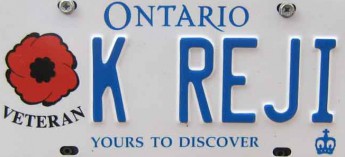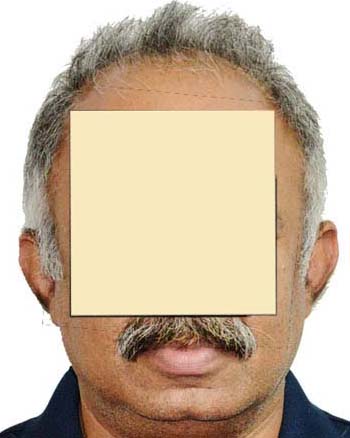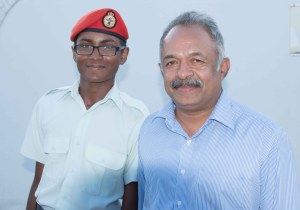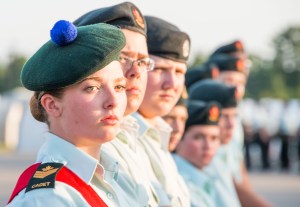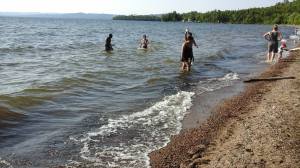Mr G Sivakumar, our senior at school commented on my earlier blog ‘For your kind information and necessary action please,‘ that he had worked for a boss who used to write PDTN on the noting and he thought it meant ‘Please Destroy This Note,‘ where as the boss intended ‘Please Do The Needful!‘ On Googling PTDN, I found ‘Professional and Technical Diversity Network‘ and ‘Please Do The Needful!‘ (India.)
The expression ‘Please Do The Needful‘ is currently used in Indian English. The expression was in vogue in both British and American English until the early 20th Century, but is now considered obsolete and improper.
‘Please Destroy This Note‘ expression reminded me of my tenure with The Army Headquarters at New Delhi where the Post-It notes were used extensively by the senior officers. The yellow coloured piece of paper, which neither stuck nor stood, always irritated me, both in its colour and also in what was written on it. The senior officer when not in agreement with the junior’s noting on a file, or when he thought that noting may raise hackles with his seniors, resorted to sticking up the Post-It note with instructions to change the noting. I always thought that in case the senior officer felt that my line of thought was incorrect, he must put in a note saying so. As the days passed by, I realised that many of the seniors did not have the conviction to do so and hence resorted to much more use of the yellow paper.
Every time a file came back to me with a Post-It note, I removed it and returned the file without any changes to my original note. In most cases, I was summoned by the senior officer and in the end, the case was taken off from my responsibility as I failed to budge and tow someone’s lines. The files that went to the Ministry of Defence came back approved/sanctioned or with a query, but never with the yellow paper stuck on it.
Similarly, the noting sheets used at the Army Headquarters ranged from drafting paper to the photocopying paper. Many a time the noting of General Officers and even the Defence Minister was on a drafting sheet. However, the very same officers when commanding brigades or divisions end up demanding that all the documents put up to them must be on ‘Bond’ paper. Bond paper is a high quality durable writing paper having a weight greater than 50 g/m2. The name comes from it having originally been made for documents such as government bonds.
After the tenure at the Army Headquarters, I took over command of the Regiment and I ensured that the Yellow Post-It note and the ‘Bond‘ paper was banned from all the offices of the unit. I encouraged all the officers to place on record their thoughts, even if it was not in accordance with my thoughts or with the common military thoughts. In case anyone up the chain did not agree with the note, they had to record their disagreement on the same file. This ensured increased faith in the system by the junior commanders and also gave them a feeling that their opinions were heard and many a times adhered to.
My aversion for this poor yellow Post-It note made me research into its origin and development. It appears that the invention was a mere accident at the 3M lab. The 3M Company, formerly known as the Minnesota Mining and Manufacturing Company, has more than 55,000 products, including: adhesives, abrasives, laminates, dental and orthodontic products, electronic materials, car-care products, etc.
Spencer Silver in 1968, researching at the 3M lab to create super strong adhesives for use in the aerospace industry, ended up creating an incredibly weak adhesive. They found that the adhesive when stuck to any surface, can be peeled off without leaving any residue and was re-usable. 3M could not think of any practical and marketable use for this adhesive and hence the research was shelved.

In 1973, Silver came up with a bulletin board with the adhesive sprayed on it. One could then stick pieces of paper to the bulletin board without drawing pins or tape. The paper could subsequently be easily removed without any residue being left on the board or the paper. As the bulletin boards were not much in demand, the idea was dropped being uneconomical and unmarketable.
Chemical engineer Art Fry, worked for 3M and had attended one of Silver’s seminars on the low-powered adhesive. He realised that this adhesive could be used to stick page markers on his church choir book. This facilitated him to turn to the correct page using the markers and the markers never fell out of the book. From his experience, Fry suggested use of the adhesive on the paper than being used on the bulletin board. The early prototypes had the problem that the adhesive often detached from the paper and stayed on the object the paper was stuck to, or, at least, leave some of the adhesive behind.
Have you wondered as to why most of the Post-It notes are yellow in colour? The colour was never selected but was also an accident. It is believed that the lab next door to where they were working on the Post-It note had some scrap yellow paper and later the developers stuck with the colour. However, 3M’s official version is that good emotional connection with users and that it will contrast well stuck to white paper.
Post-It notes became extremely popular internally at 3M labs and in 1977, 3M began running test sale runs of the Post-It note, then called Press ‘n Peel. It did not become popular and after five years of rejection it slowly became a success and today is a mainstay in offices all over the world and is one of the top five best selling office supply products in the world.
There are many uses I found for the Post-It notes, but never the one as was being used at the Army Headquarters or by the many indecisive bosses in offices. Some of the uses I found are:-
- Book marker.
- Mark the notes or glossary at the back of a book for easy repeated access.
- Coffee coaster.
- Memory aid
- Decorating tool.
- To-Do List.
- A reminder for the children to be left on their door-knobs.
- An ideal tool to clean the gaps on the keyboards and other instruments.
- To be stuck on the refrigerator door as a shopping list, wherein everyone can add their requirements so that I could buy them at the supermarket. The note can be removed and stuck on to the wallet when leaving for the supermarket and at the supermarket it could be peeled off and stuck to the handle of the shopping cart.
Thomas Alva Edison once said that “I never did anything by accident, nor did any of my inventions come by accident; they came by work.“ It is mostly true with many inventions by the humanity, but some were mere accidents.
